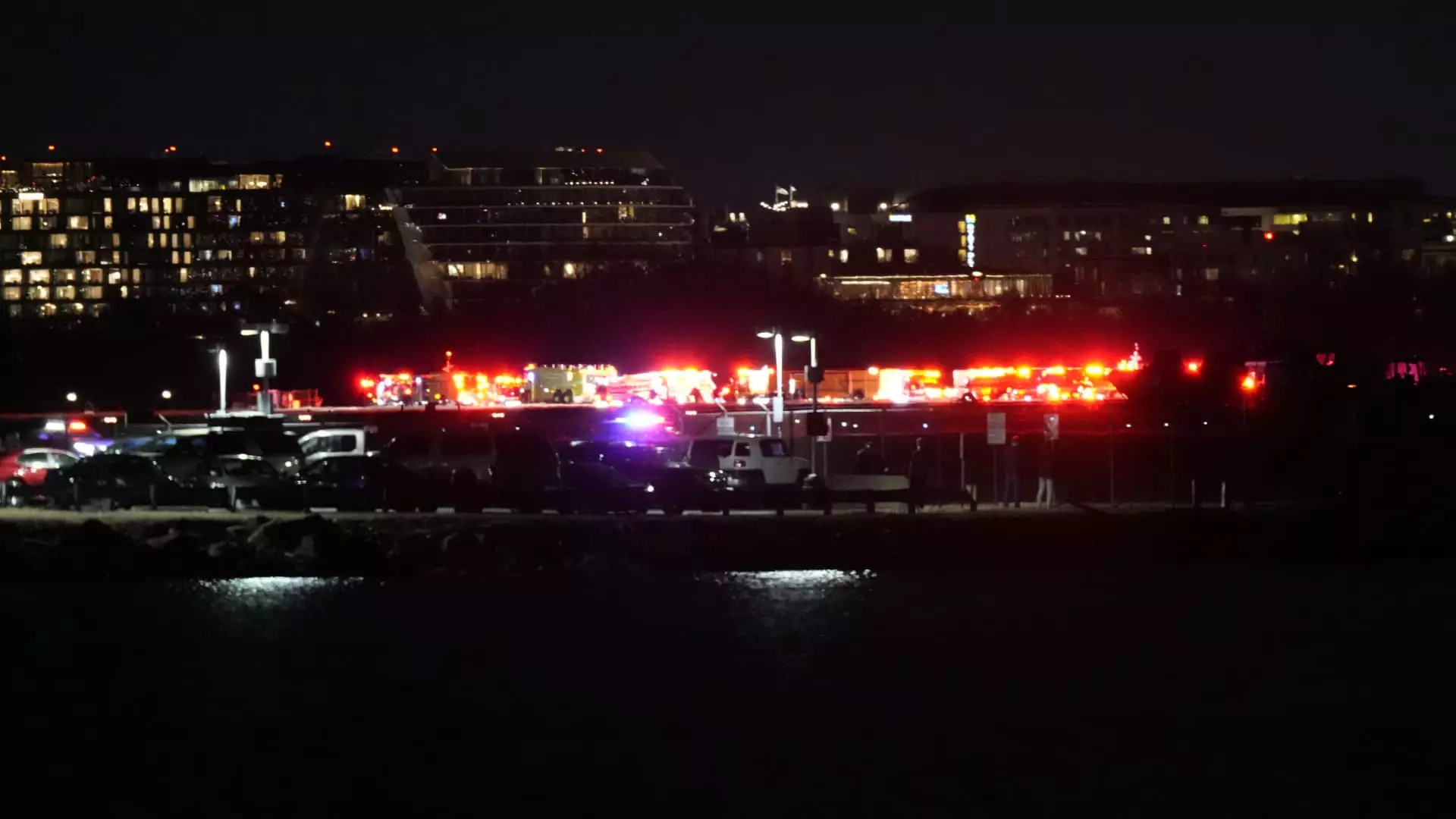On a fateful Wednesday evening, an American Airlines regional jetliner, identified as American Eagle Flight 5342, was involved in a catastrophic collision with a military Black Hawk helicopter near Washington D.C.’s Ronald Reagan Washington National Airport. The incident occurred just prior to landing, with the regional jet carrying 64 individuals, encompassing both passengers and crew members. This event has reverberated across the aviation community and raised serious questions regarding both air traffic safety and operational protocols given the proximity to one of the nation’s busiest airports.
According to reports from the Federal Aviation Administration (FAA), the regional jet, a Bombardier CRJ700 operated by PSA Airlines—a subsidiary of American Airlines—was on final approach to Runway 33 when it struck the Sikorsky H-60 helicopter at approximately 9 p.m. ET. At the time of the collision, the aircraft was reportedly flying at an altitude of around 300 feet after departing from Wichita, Kansas. This altitude, particularly during the approach phase, underscores a critical level of risk, as jets are often at their most vulnerable while transitioning from cruising altitude to landing.
The collision has been described as potentially the most severe air disaster in the United States in over a decade, highlighting an alarming trend that has seen aviation safety records become increasingly sophisticated yet still vulnerable to catastrophic failure during unforeseen circumstances.
In the aftermath of the collision, American Airlines quickly activated its emergency protocols, with CEO Robert Isom announcing his intention to lead a “go-team” to Washington. The airline expressed its primary concern for those aboard the flight, effectively communicating its role in not only managing the situation but also ensuring that necessary support systems were in place for affected families.
However, as emergency responders commenced rescue operations, conditions in the Potomac River proved challenging. High winds and adverse weather hampered efforts to locate and recover individuals from both aircraft. Reports indicated that rescue workers faced daunting circumstances, amplifying the previously tense atmosphere surrounding the incident.
In parallel, both the FAA and the National Transportation Safety Board (NTSB) are actively involved in conducting a full investigation to analyze the causes behind this tragic event. Given the lack of recent fatal incidents in commercial aviation since February 2009, this collision serves as a stark reminder of the vulnerabilities that remain inherent even in an era marked by significant advancements in aviation safety.
This incident raises profound questions about safety protocols, particularly pertaining to the coordination between military and civilian aviation operations. The fact that the helicopter involved was on a training flight out of Fort Belvoir, Virginia, further complicates operational oversight in areas of shared airspace.
Furthermore, following the crash, officials were hesitant to comment on casualties, a grim necessity that indicates the gravity of the situation. Given that bodies were reported to have been recovered from the Potomac hours after the incident, this tragedy casts a grave shadow over aviation and military communities alike.
In light of this tragic event, it is imperative for regulators, airlines, and military officials to reassess existing airspace management protocols. Increased collaboration and communication between different branches of aviation could foster safer operational procedures that minimize conflict in shared airspaces.
As President Trump acknowledged the work of first responders, the broader implications of this event reflect an urgent need for review and reform in aviation safety not just at a federal level, but also in local and operational protocols across the nation. The aviation industry has a responsibility to ensure safety and mitigate risks that could lead to such preventable tragedies.
The collision between the American Airlines regional jet and the military helicopter serves not only as a mournful reminder of the inherent risks associated with aviation but as an essential catalyst for initiating a renewed commitment to safety within a complex and interwoven air traffic environment.

